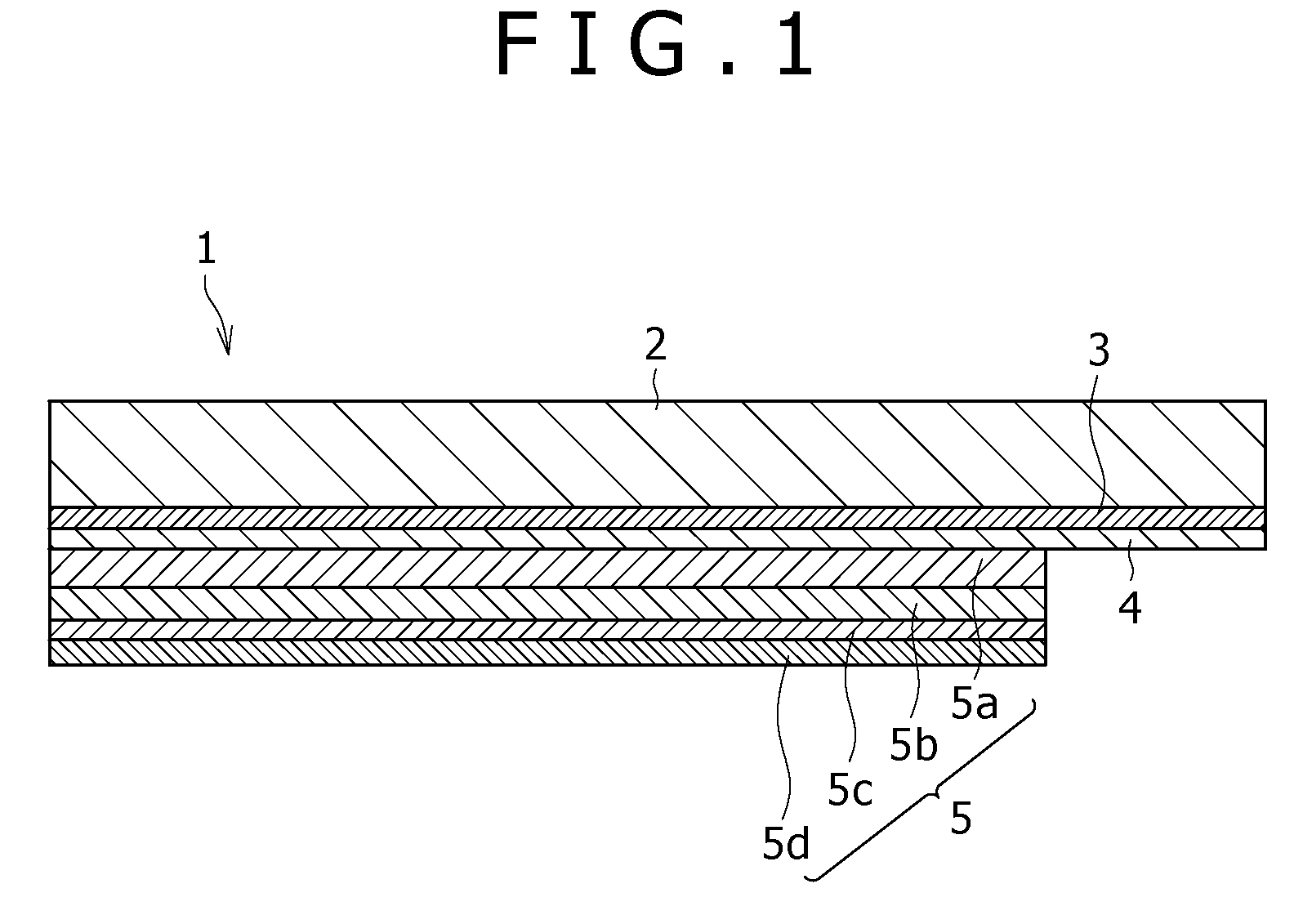Method for manufacturing display and display
a technology of display and display, applied in the manufacture of electrode systems, electric discharge tubes/lamps, discharge tubes luminescnet screens, etc., can solve the problems of contact failure between the upper electrode and the auxiliary electrode, deteriorating display performance, and difficult to enhance display performance, etc., to achieve the effect of lowering the aperture ratio and low aperture ratio
- Summary
- Abstract
- Description
- Claims
- Application Information
AI Technical Summary
Benefits of technology
Problems solved by technology
Method used
Image
Examples
first embodiment
[0037]FIGS. 2A to 2F are sectional views for explaining steps of a manufacturing method that employs a donor film having the above-described one configuration example according to a first embodiment of the present invention. These sectional views of steps correspond to a section of one pixel in the display area.
[0038]Referring initially to FIG. 2A, a thin film transistor Tr, capacitive element, and resistive element (not shown) included in a pixel circuit are formed on a substrate 10 composed of e.g. an optically transparent material. Subsequently, a first insulating film 12 that covers these elements (thin film transistor Tr, in the drawing) is deposited. Furthermore, on the first insulating film 12, a source electrode interconnect 14s and a drain electrode interconnect 14d that are connected to the transistor Tr, and a signal line, power supply line, and so on that are connected to these interconnects 14s and 14d are adequately formed.
[0039]Thereafter, a second insulating film 16 ...
second embodiment
[0070]FIGS. 4A to 4F are sectional views for explaining steps of a manufacturing method that employs a donor film having the above-described one configuration example according to a second embodiment of the present invention. These sectional views of steps correspond to a section of one pixel in the display area. The same components in the second embodiment as those in the first embodiment are given the same numerals, and a redundant description thereof is omitted.
[0071]Referring initially to FIG. 4A, elements such as a thin film transistor Tr included in a pixel circuit are formed on a substrate 10, and these elements are covered by a first insulating film 12. On the first insulating film 12, a source electrode interconnect 14s and a drain electrode interconnect 14d that are connected to the thin film transistor Tr, and a signal line, power supply line, and so on that are connected to these interconnects 14s and 14d are adequately formed.
[0072]Subsequently, a second insulating film...
third embodiment
[0083]FIGS. 5A to 5F are sectional views for explaining steps of a manufacturing method that employs a donor film having the above-described one configuration example according to a third embodiment of the present invention. These sectional views of steps correspond to a section of one pixel in the display area. The same components in the third embodiment as those in the second embodiment are given the same numerals, and a redundant description thereof is omitted.
[0084]Referring initially to FIG. 5A, elements such as a thin film transistor Tr included in a pixel circuit are formed on a substrate 10, and these elements are covered by a first insulating film 12. On the first insulating film 12, a source electrode interconnect 14s and a drain electrode interconnect 14d that are connected to the thin film transistor Tr, and a signal line, power supply line, and so on that are connected to these interconnects 14s and 14d are adequately formed.
[0085]Subsequently, similarly to the second e...
PUM
 Login to View More
Login to View More Abstract
Description
Claims
Application Information
 Login to View More
Login to View More - R&D
- Intellectual Property
- Life Sciences
- Materials
- Tech Scout
- Unparalleled Data Quality
- Higher Quality Content
- 60% Fewer Hallucinations
Browse by: Latest US Patents, China's latest patents, Technical Efficacy Thesaurus, Application Domain, Technology Topic, Popular Technical Reports.
© 2025 PatSnap. All rights reserved.Legal|Privacy policy|Modern Slavery Act Transparency Statement|Sitemap|About US| Contact US: help@patsnap.com



